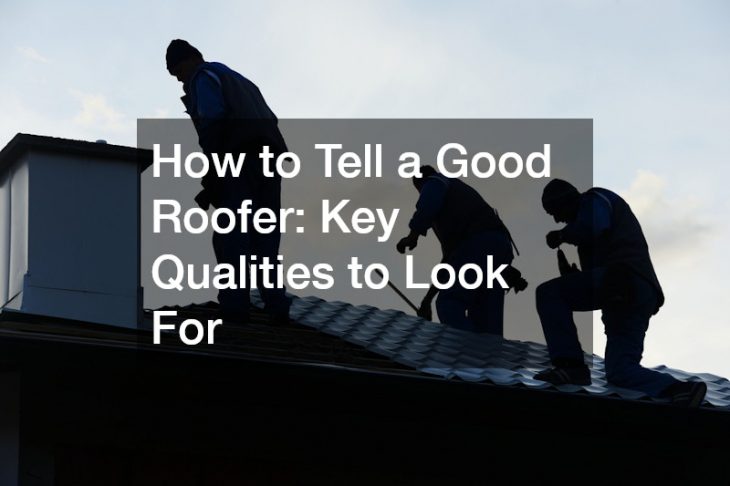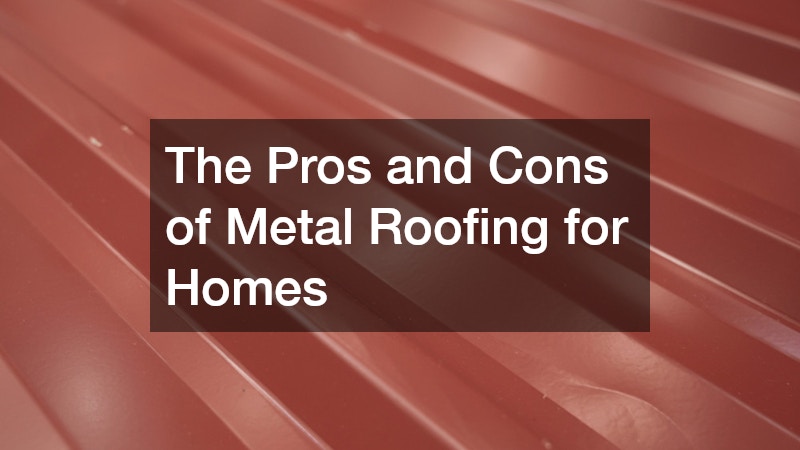
The Pros and Cons of Metal Roofing for Homes
Metal roofing has become an increasingly popular choice for homeowners looking to replace their roofs. With its durability and longevity, energy efficiency, and low maintenance requirements, metal roofing offers a range of benefits. However, there are also drawbacks to consider, such as the potential for noise during rain or hailstorms and the risk of denting from hail or falling debris. In this article, we will explore the advantages and disadvantages of metal roofing for your home.
1. Durability and Longevity Compared to Other Materials
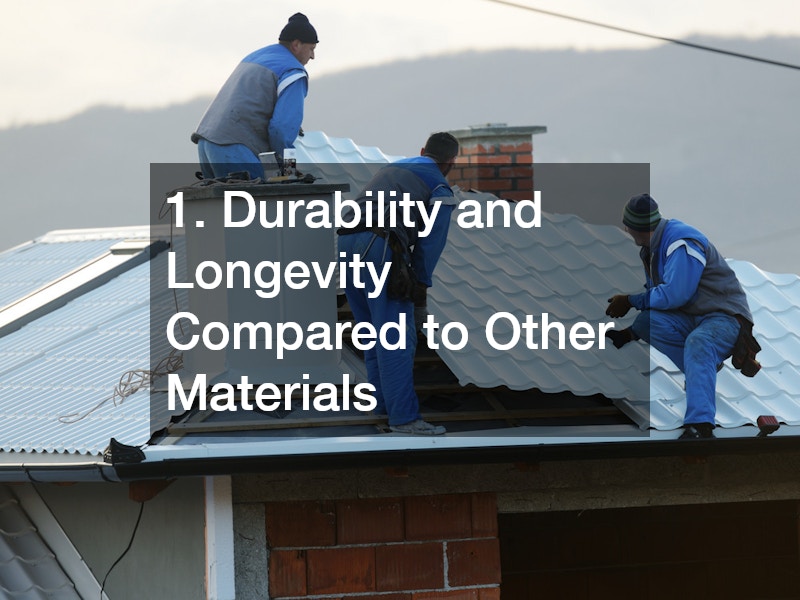
When it comes to roof replacement, metal roofing stands out for its durability and longevity. Metal roofs can last 50 years or more, compared to the average lifespan of 20 years for traditional asphalt shingles. This longevity means less frequent replacement and maintenance, saving homeowners both time and money in the long run.
Additionally, metal roofing is resistant to various weather conditions, including high winds, heavy snow, and hail. This durability makes it an excellent choice for homes in areas prone to extreme weather events. With proper installation and maintenance, a metal roof can provide reliable protection for your home for decades to come.
Furthermore, metal roofing is fire-resistant, reducing the risk of damage to your home in the event of a fire. This added protection gives homeowners peace of mind knowing that their property is better safeguarded against potential disasters.
2. Energy Efficiency and Heat Reflection Benefits
One of the key advantages of metal roofing is its energy efficiency. Metal roofs reflect solar heat, keeping your home cooler in the summer and reducing the need for air conditioning. This energy-saving feature can lead to lower utility bills and overall cost savings for homeowners.
In addition to energy efficiency, metal roofing is also environmentally friendly. Many metal roofs are made from recycled materials and are fully recyclable at the end of their lifespan, making them a sustainable choice for eco-conscious homeowners. By choosing metal roofing, you can reduce your carbon footprint and contribute to a greener future.
Furthermore, metal roofs are available in a variety of finishes that can further enhance their heat-reflective properties. By selecting a light-colored roof, you can maximize heat reflection and improve the overall energy efficiency of your home.
3. Low Maintenance Requirements for Homeowners
Homeowners appreciate the low maintenance requirements of metal roof services. Unlike traditional roofing materials that may need frequent repairs or replacement, metal roofs are known for their durability and reliability. With minimal maintenance, such as periodic inspections and debris removal, a metal roof can continue to perform well for many years.
Moreover, metal roofing is resistant to common issues such as mold, mildew, and rot, which can plague other types of roofing materials. This resistance to moisture damage makes metal roofing an excellent choice for homes in humid or rainy climates. By choosing metal roofing, homeowners can enjoy peace of mind knowing that their roof is well-protected against environmental hazards.
Additionally, metal roofs require less maintenance than traditional roofing materials, saving homeowners time and effort in upkeep. With its long lifespan and minimal maintenance requirements, metal roofing is a practical and cost-effective choice for homeowners looking for a durable and reliable roofing solution.
4. Wide Variety of Styles, Colors, and Finishes
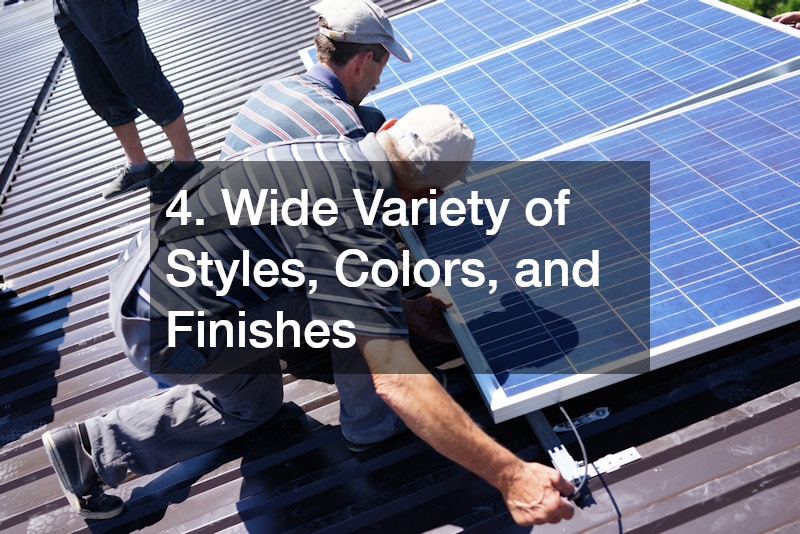
One of the advantages of metal roofing is the wide variety of styles, colors, and finishes available to homeowners. Whether you prefer a traditional look or a modern design, there is a metal roof option to suit your aesthetic preferences. From standing seam metal roofs to metal shingles, the range of styles allows homeowners to customize their roof to complement the overall look of their home.
Furthermore, metal roofs come in a multitude of colors, from classic neutrals to bold and vibrant hues. This variety of color options gives homeowners the flexibility to choose a roof that enhances their home’s curb appeal and reflects their personal style. With so many choices available, you can find a metal roof that perfectly complements your home’s exterior design.
In addition to styles and colors, metal roofing offers various finishes that can further enhance the appearance of your home. Whether you prefer a matte, gloss, or textured finish, there is a metal roof option to match your desired aesthetic. By selecting the right style, color, and finish, you can elevate the look of your home and increase its value.
5. Lightweight Material That Reduces Structural Stress
Another benefit of metal roofing is its lightweight nature, which helps reduce structural stress on homes. Compared to heavier roofing materials like concrete tiles or slate, metal roofs put less strain on the supporting structure of a house. This reduced weight can help extend the lifespan of your home’s framing and foundation, ensuring its long-term stability.
Additionally, the lightweight nature of metal roofing makes it easier to install and replace for roofing companies, saving time and labor costs for homeowners. With less weight to support, the installation process is quicker and more straightforward, resulting in a smoother roofing project overall. By choosing metal roofing, homeowners can avoid unnecessary strain on their homes and enjoy a hassle-free installation experience.
Furthermore, the lightweight nature of metal roofing can be beneficial in areas prone to seismic activity. Metal roofs provide durable protection against earthquakes without adding excessive weight to a structure, making them a suitable choice for earthquake-prone regions. By selecting metal roofing, homeowners can ensure the safety and stability of their homes in the event of seismic events.
6. Higher Upfront Cost Compared to Traditional Roofing
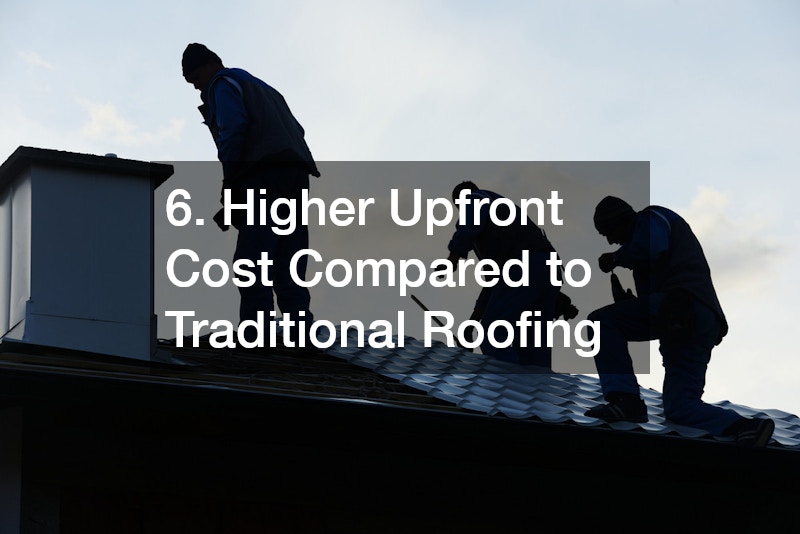
While metal roofing offers numerous benefits, it is important to consider the higher upfront cost compared to traditional roofing materials. Metal roofs can be more expensive to purchase and install than asphalt shingles or wood shakes, making them a significant investment for homeowners. However, this initial cost is balanced by the long-term savings and benefits that metal roofing provides.
Despite the higher upfront cost, metal roofing offers a greater return on investment over time when installed by a roofing company due to its durability, longevity, and energy efficiency. By choosing metal roofing, homeowners can reduce their maintenance and repair expenses, lower their energy bills, and increase the value of their property. While the initial investment may be higher, the overall cost-effectiveness of metal roofing makes it a wise choice for homeowners looking for a long-lasting and reliable roofing solution.
Moreover, the higher upfront cost of metal roofing can be offset by the potential savings on homeowners insurance premiums. Many insurance companies offer discounts for homes with metal roofs due to their fire resistance, durability, and weather resistance. By choosing metal roofing, homeowners may qualify for lower insurance rates, further enhancing the financial benefits of this roofing option.
7. Potential for Noise During Rain or Hailstorms
One of the drawbacks of metal roofing installation is the potential for noise during rain or hailstorms. Metal roofs can be louder than traditional roofing materials when exposed to precipitation, which may be disruptive for some homeowners. The sound of rain or hail hitting a metal roof can be more pronounced, especially in areas with heavy rainfall or hail events.
While the noise level of metal roofs can vary depending on the installation and insulation, some homeowners may find the sound undesirable. To mitigate noise issues, homeowners can opt for additional insulation or soundproofing materials during the installation process. By taking steps to reduce noise transmission, homeowners can enjoy the benefits of metal roofing without the unwanted sound disturbances.
Furthermore, advancements in metal roofing technology have led to quieter roof systems that minimize noise from rain or hail. Insulated metal panels and sound-deadening underlayment can help reduce noise levels and create a more peaceful indoor environment. By selecting noise-reducing features, homeowners can enjoy the durability and energy efficiency of metal roofing without compromising on comfort.
8. Expansion and Contraction Issues in Extreme Temperatures
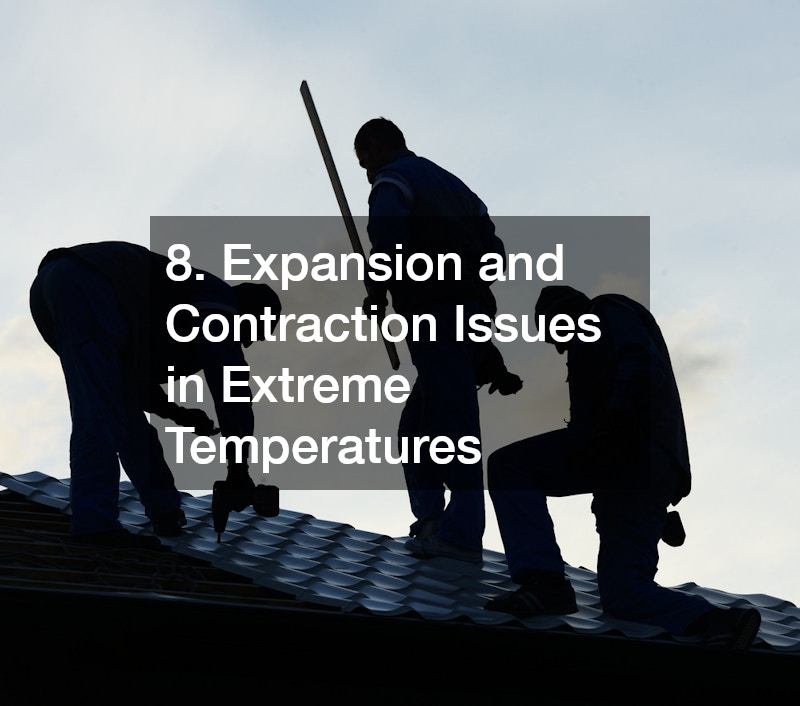
Another consideration when choosing metal roofing services is the potential for expansion and contraction in extreme temperatures. Metal roofs can expand and contract with changes in temperature, leading to issues such as roof movement, fastener fatigue, and sealant failure. These thermal movements can affect the overall performance and integrity of a metal roof over time.
To address expansion and contraction issues, proper installation and fastening techniques are essential. Metal roofing systems should be installed with sufficient allowances for thermal movement to prevent buckling or warping. Additionally, quality sealants and fasteners should be used to ensure a secure and stable roof structure that can withstand temperature fluctuations.
Furthermore, selecting the right type of metal and finish can help minimize thermal movement and associated issues. Certain metal alloys and coatings are designed to resist thermal expansion and contraction, enhancing the durability and performance of a metal roof. By choosing a reliable metal roofing system and following best practices for installation, homeowners can mitigate the effects of temperature fluctuations and maintain the longevity of their roof.
9. Risk of Denting From Hail or Falling Debris
Despite its durability, metal roofing is susceptible to denting from hail or falling debris. Large hailstones and heavy objects can dent metal roofs, compromising their appearance and structural integrity. While metal roofs are more resistant to impact damage than other materials, they are not completely impervious to denting.
To reduce the risk of denting, homeowners can choose thicker gauge metal panels or impact-resistant coatings for their roofs. Thicker metal panels are more resistant to denting and can withstand greater impact force, providing enhanced protection against hail and debris. Impact-resistant coatings can also help prevent dents and scratches, prolonging the lifespan of a metal roof.
In addition, regular inspections, roof repair, and maintenance can help identify and address potential issues before they escalate. By inspecting your metal roof for dents and damage, you can take timely action to repair or replace affected panels and maintain the overall integrity of your roof. With proactive maintenance and protective measures, homeowners can minimize the risk of denting and ensure the long-term durability of their metal roof.
10. Overall Return on Investment for Homeowners
When evaluating the benefits and drawbacks of metal roofing, it is essential to consider the overall return on investment for homeowners. While metal roofs may have a higher upfront cost than traditional materials, they offer long-term savings and financial benefits that can outweigh the initial investment. By factoring in durability, longevity, energy efficiency, and maintenance requirements, homeowners can determine the cost-effectiveness of metal roofing.
Metal roofs installed by a roofer provide a high return on investment through reduced maintenance and repair expenses, lower energy bills, and potentially higher property value. The long lifespan of metal roofing means fewer replacement costs over time, saving homeowners money in the long run. Additionally, the energy-saving properties of metal roofs can lead to significant reductions in heating and cooling costs, further enhancing the financial benefits.
Furthermore, metal roofing can increase the resale value of a home due to its durability, energy efficiency, and aesthetic appeal. Buyers are often willing to pay more for a home with a metal roof, recognizing the long-term benefits and cost savings it provides. By choosing metal roofing, homeowners can not only enjoy a reliable and sustainable roofing solution but also enhance the value and marketability of their property.
In conclusion, metal roofing offers a range of benefits for homeowners, including durability, longevity, energy efficiency, and low maintenance requirements. While there are drawbacks to consider, such as noise during rain or hailstorms and the risk of denting, the advantages of metal roofing outweigh the potential challenges. By carefully weighing the pros and cons of metal roofing and considering factors like cost, aesthetics, and performance, homeowners can make an informed decision about the best roofing option for their home.
In conclusion, metal roofing offers a range of benefits for homeowners, including durability, longevity, energy efficiency, and low maintenance requirements. While there are drawbacks to consider, such as noise during rain or hailstorms and the risk of denting, the advantages of metal roofing outweigh the potential challenges. By carefully weighing the pros and cons of metal roofing and considering factors like cost, aesthetics, and performance, homeowners can make an informed decision about the best roofing option for their home.
Ready to explore if metal roofing is the right choice for your home? Contact a trusted roofing contractor today to schedule a consultation and discover the best options to protect and enhance your property.

